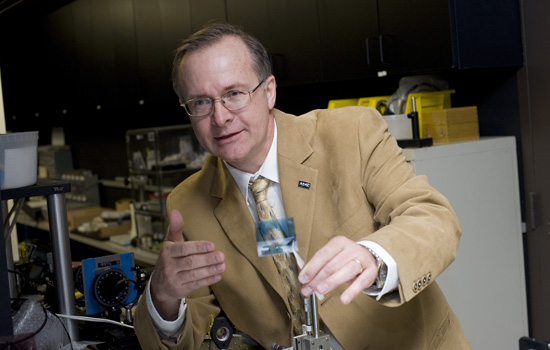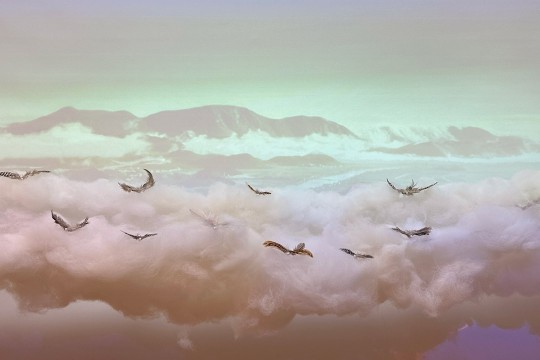RIT Professor Teaches Optics at Pan-American Advanced Studies Institute on Frontiers in Imaging Science in Colombia
Grover Swartzlander
A ring of smoke, a tornado and a hurricane are all examples of the spiraling motion that defines a vortex. Optical vortices are harder to see, but evidence of them can been found in the twinkling of the stars and the speckle pattern cast by laser beams.
“When you see speckled light you can rest assured that there will be vortices nearby the bright speckles,” says Grover Swartzlander, associate professor in RIT’s Department of Physics and the Chester F. Carlson Center for Imaging Science. “Astronomers want to get rid of the optical vortices because then they wouldn’t have the speckle problem; they’d get nice images. It’s a problem for a lot of scientists.”
An optical vortex is a dark node at the center of a swirling beam of light. It can be created by atmospheric turbulence or produced in a controlled way using a vortex lens.
An expert in the field of singular optics, Swartzlander attached an optical vortex lens to a coronagraph to block the light emitted from a twinkling star while at the University of Arizona in 2008. Used on their own, coronagraphs partially block out light obscuring other astronomical objects. Swartzlander’s solution refines the technique using a special high-contrast lens to remove diffracted light from the imaging process. His method effectively suppresses starlight, allowing for scientists to gather optical information about exoplanets, or those planets detected beyond our solar system.
“The coronagraph has been used now by the Jet Propulsion Laboratory to look at exoplanets around a distant star from an Earth-based telescope,” Swartzlander says. “It was quite an achievement that this concept works. The hope is that one day they will put this on a space telescope. The problem with Earth-based telescopes is that the atmosphere has too much aberration.”
Swartzlander’s work has sparked an increased interest in vortex optics research. He will share his knowledge with graduate students and other young scientists from the United States and Central and South America during the next two weeks at the Pan-American Advanced Studies Institute on Frontiers in Imaging Science.
The National Science Foundation-funded program, held June 7–17 at Universidad Nacional de Colombia in Bogatá, shares a cultural as well as scientific purpose. Leading scientists from the United States and Central and South America will talk about their optics research while cultivating connections among each other and the 40 attending students. Additional sponsors include the U.S. Department of Energy, the International Commission on Optics, Latin American Center of Physics and the Iberian American Network on Optics.
“It is an advanced school for people who have had some optics and who want some insights into what the hot areas are in optical science,” Swartzlander says.
Swartzlander will talk about the mathematical properties of vortex lenses and the coronagraph and “give students some sense of why these are interesting.”
Attending the institute with Swartzlander are Alexandra Artusio-Glimpse, Ross Robinson and Kenneth Fourspring, master’s students in imaging science, and David Saroff, a doctoral student in the Astrophysical Sciences and Technology program.















